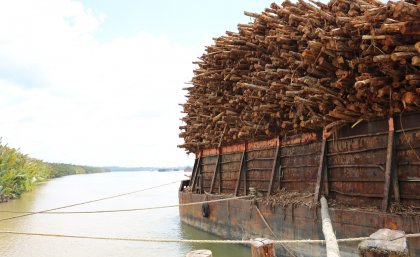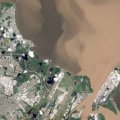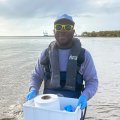
A study involving University of Queensland researchers has found that, despite economic and population growth, the physical impact of humans on the planet has slowed.
The study found that the global population grew 23 per cent and the global economy grew 153 per cent between 1993 and 2009, but humanity’s footprint grew only nine per cent.
UQ School of Biological Sciences honorary researcher and University of Northern British Columbia academic Associate Professor Oscar Venter said that humans were becoming more efficient in the use of natural resources.
“Seeing that our impacts have expanded at a rate that is slower than the rate of economic and population growth is encouraging,” Dr Venter said.
Associate Professor James Watson, of UQ’s School of Geography, Planning and Environmental Management and the Wildlife Conservation Society said it was little wonder that there was a biodiversity crisis.
“Our maps show that three quarters of the planet is now significantly altered and 97 per cent of the most species-rich places on Earth have been seriously altered,” he said.
The researchers considered human impacts such as built surfaces, roads, crop and pasture land, night-time lights and population density to generate a new global map of the human footprint and to measure change in that footprint over 16 years.
Although it was very rare for the footprint to decline at any location, the rate of increase was smaller for wealthier countries.
Regions with large numbers of threatened species were associated with a high degree of human pressure.
Only a few places with many threatened species remained impact-free, including central Borneo and the Central Asia Deserts.
Despite identifying places where human impact had decreased, the study highlighted that future challenges for balancing environmental and societal needs could be concentrated in countries with emerging economies or in the Earth’s most biodiverse regions.
“Sustainable development is a widely espoused goal, and our data demonstrates clear messages of how the world can get there,” Dr Venter said.
Maps and datasets used in the study are available at http://wcshumanfootprint.org/.
The maps will be available by policy makers and researchers for a wide range of applications, such as identifying places that are still largely “wild” and should be protected, as well as to identify places suitable for restoration of their natural functions and ecosystem services.
The Nature Communications study involved researchers from the University of Northern British Columbia, The University of Queensland, WCS, James Cook University, ETH Zurich, Donana Biological Station, Imperial College London, Columbia University and the City College of New York.
The analysis comes ahead of the International Union for the Conservation of Nature World Conservation Congress in Hawaii from 1-10 September.
Media: James Watson, james.watson@uq.edu.au, +6140 9185 592; or Oscar Venter oscar.venter@unbc.ca, +1 250 960 0134.
Hi-Res images, captions and credits can be downloaded here











